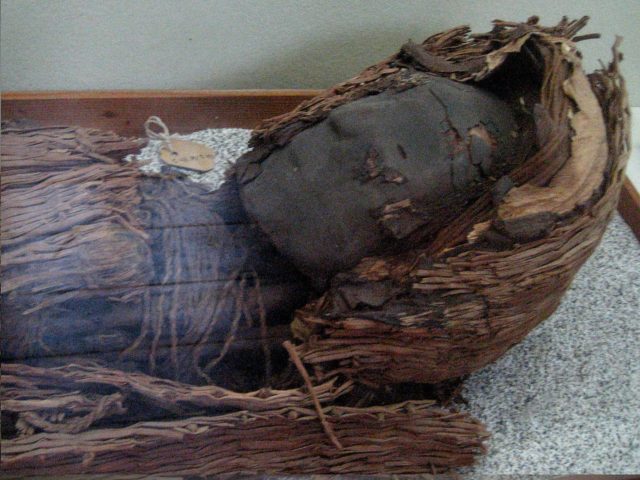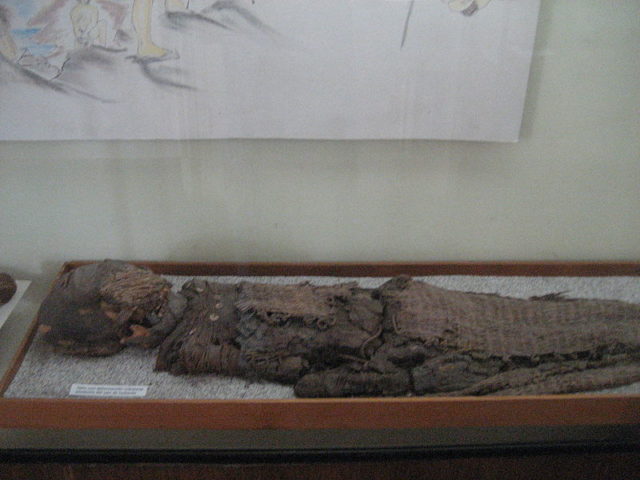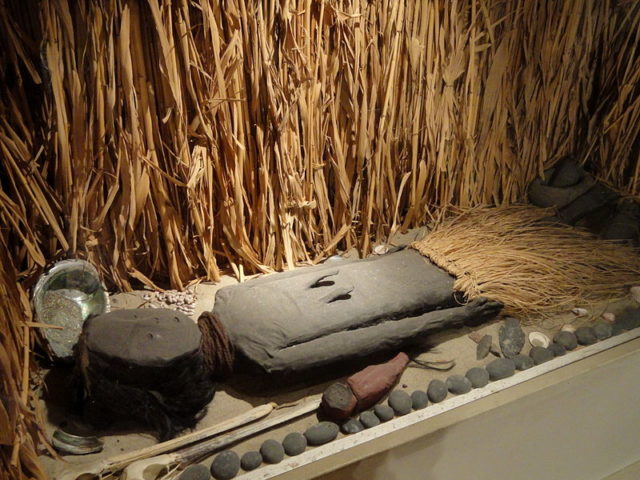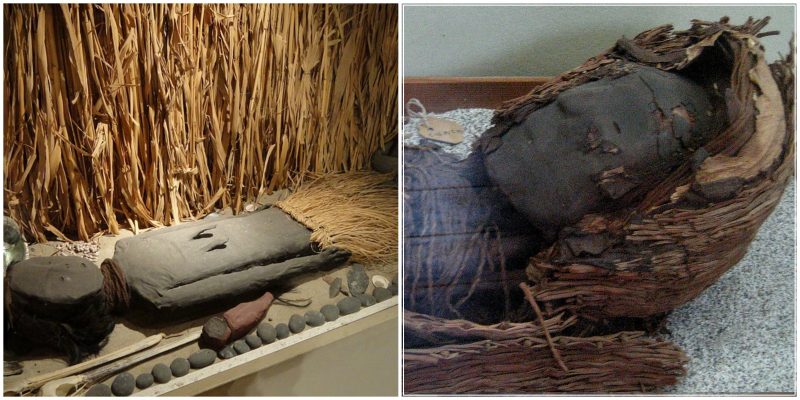When one thinks of mummies, the first thing that comes to mind is the Egyptian mummies that are found in most museums.
Mummification has been in practice for thousands of years, and in Peru, mummies have been found that pre-date Egyptian examples by more than two thousand years.
The South American Chinchorro culture mummified not only their Kings and Queens but everyday citizens as well.

The Atacama Desert which stretches for six hundred miles along the Pacific coast between northern Chile and southern Peru has long been known as the driest place in the world.
It was also home to the Chinchorro people from about 7,000 to 1500 B.C. The Chinchorro subsisted mainly on seafood and the few wild animals and plants that were found in the area.
The funeral practices of these egalitarian people included all citizens, including miscarried babies with no differences according to sex, class or age.

It has also been noted that children and babies received the most attention to detail.
In 1914, German archaeologist Max Uhle began working in this area, and his work and the works that have continued since his death in 1944 have unearthed almost three hundred Chinchorro mummies, mostly buried together in mass graves.
Dr. Bernardo Arriaza, a Chilean physical anthropologist, has published several works regarding the Chinchorro culture and it was his 1994 classifications of the mummification process that are still used today.
His book, Beyond Death: The Chinchorro Mummies of Ancient Chile is considered a must-read among the archaeologists studying the burial sites.

There were three types of mummification processes used throughout the years, the first being the black syle, used from about 5050 to 2500 B.C. In this process, the body was completely taken apart.
The flesh was removed and set aside, and the internal organs were removed. The body was stuffed with clay and plant materials layered with a paste made from ash. The body was reassembled, reinforced by wood sticks and the skin was replaced.
If for some reason all of the original skin was not available, seal skin was added to complete the process. A clay mask was fashioned with small slits for the eyes and mouth.
The majority of the bodies were laid flat on their backs and then painted with a layer of manganese. Wigs of human hair and clothing made from reeds were included for the finishing touches. By 2500 B.C. the mummification process was changed.
The body was no longer completely disassembled. The heads were removed to pull out the brains, and small openings were made around the body to remove the internal organs.

The body was filed with clay, sticks and animal fur and then the cuts were stitched with human hair using cactus spines as needles.
The clay masks featured open eyes and mouths possibly to allow the spirit to return to the body. The bodies were painted with red ochre rather than manganese probably because it was more plentiful. This coloring indicated the red style mummies.
The bodies recovered in the black and red styles of mummification seem to have been repaired and repainted, leading researches to believe that the bodies had not been immediately buried, but used in shrines and processions honoring the dead for several years before they were eventually buried in family groups.
By the time of the first century AD, all of the detailed mummification practices seem to have been abandoned, and the bodies were wrapped in reeds and simply covered with mud after the internal organs had been removed.
This practice has been referred to as the mud coat style of mummification. These bodies were usually buried right away.
Why the styles of mummification changes are not clearly known, but researchers believe that it was either due to the influx of different cultures changing traditional funeral practices or the association with dead bodies and disease becoming known.
Many consider these ancient mummies as works of art representing the Chinchorro culture.
The Archaeology Museum of San Miguel de Azapa has several on display and also has a diorama showing the different steps of the mummification process.
The Anker Nielsen Museum in Iquique, Chile also depicts a Chinchorro funeral rite with a display of some of the small personal items that would have been buried along with the mummy.
From our archives: Crusader-era hand grenade found in Israel
In the 19th century, an exhibition of Andean mummies was held in Paris, and it is believed that the red style mummies inspired the Norwegian artist Edvard Munch’s painting, The Scream.
